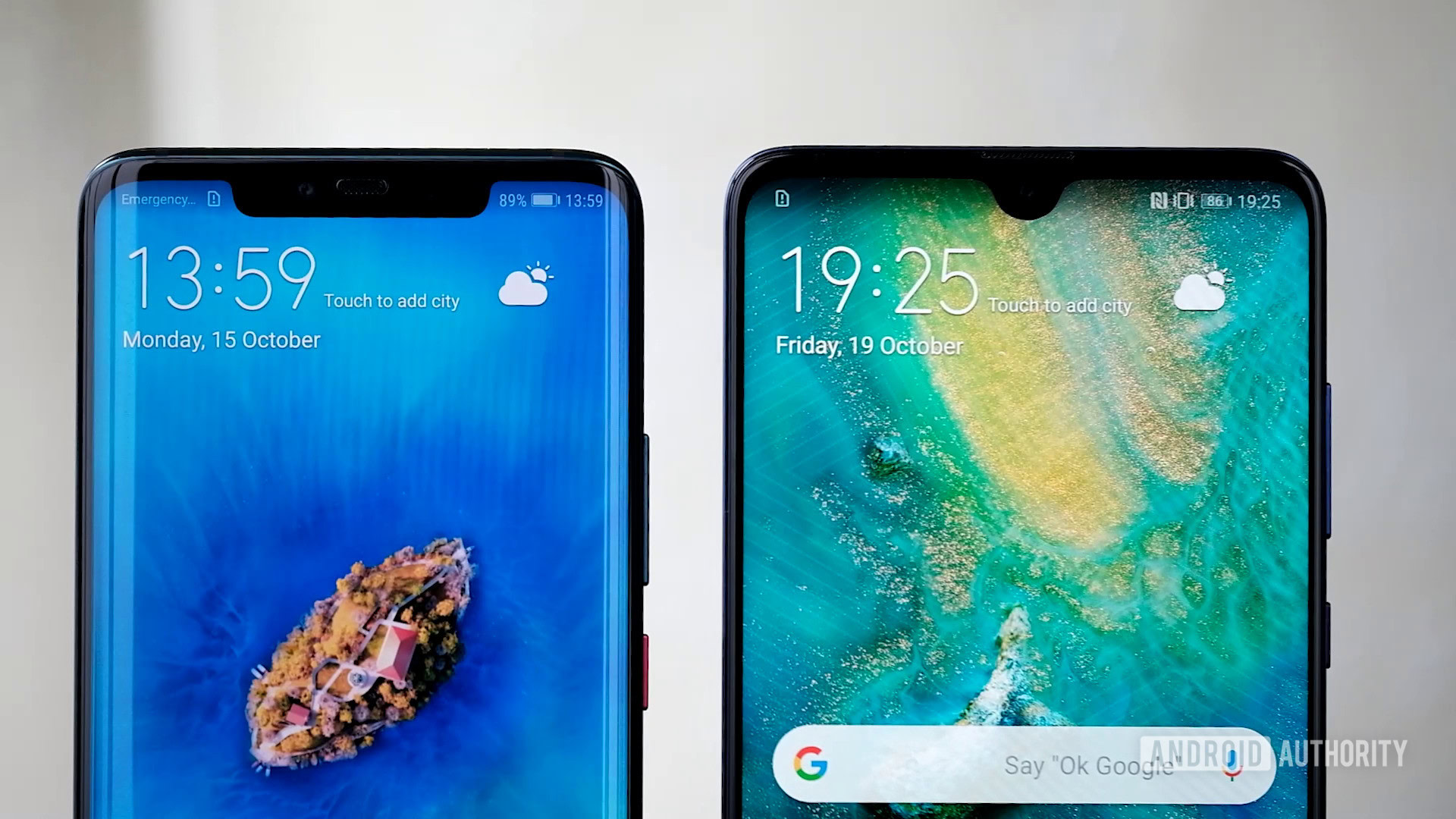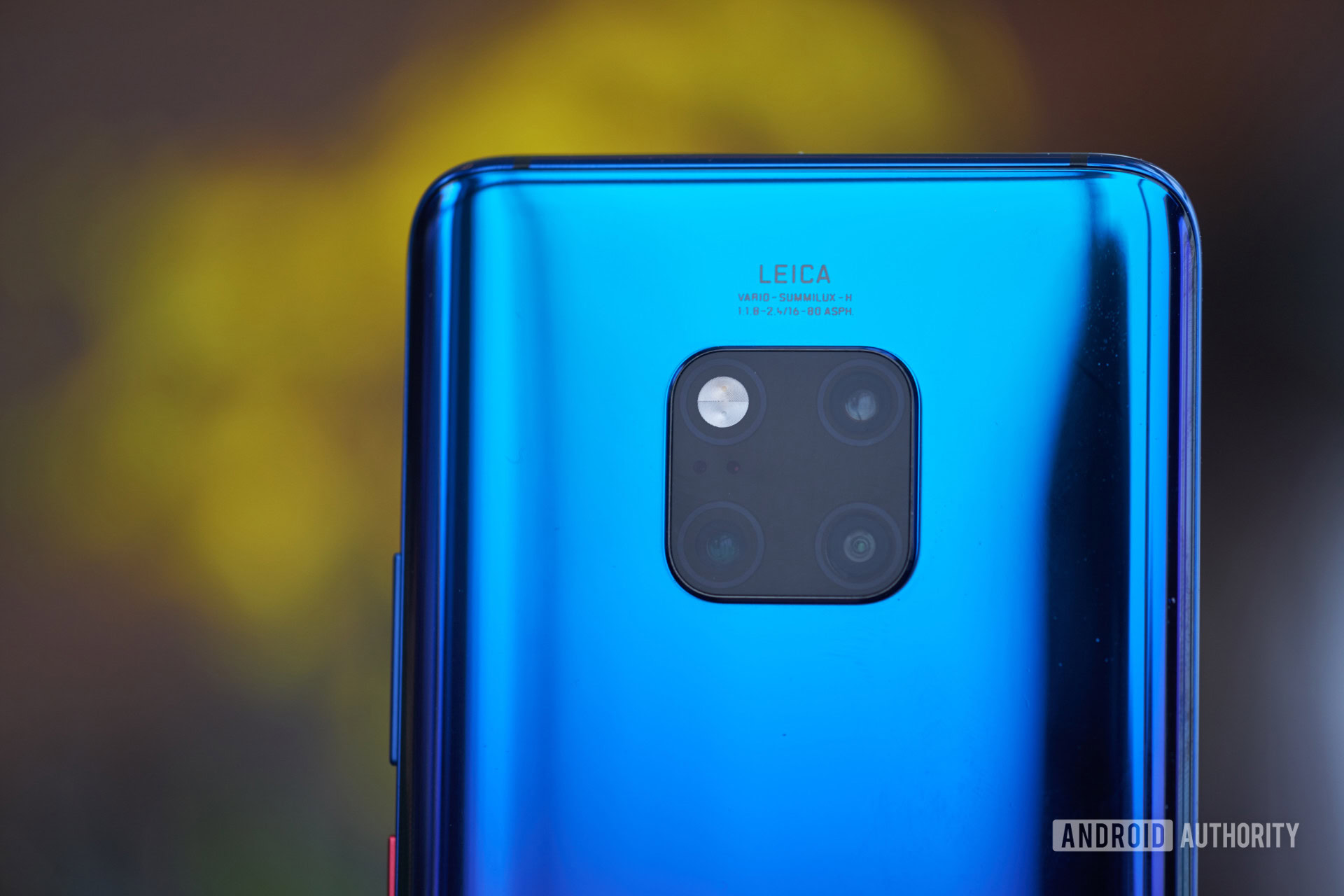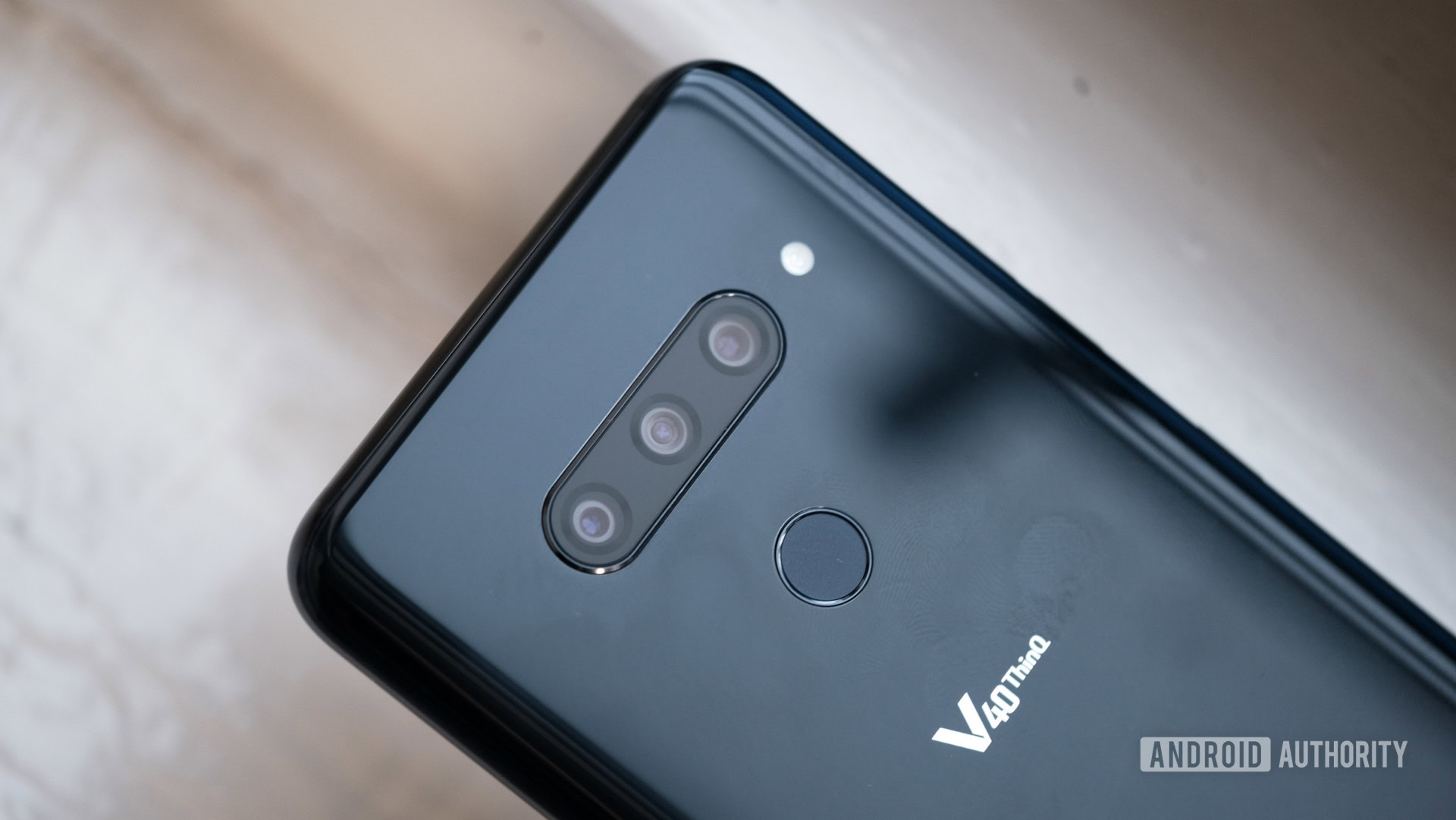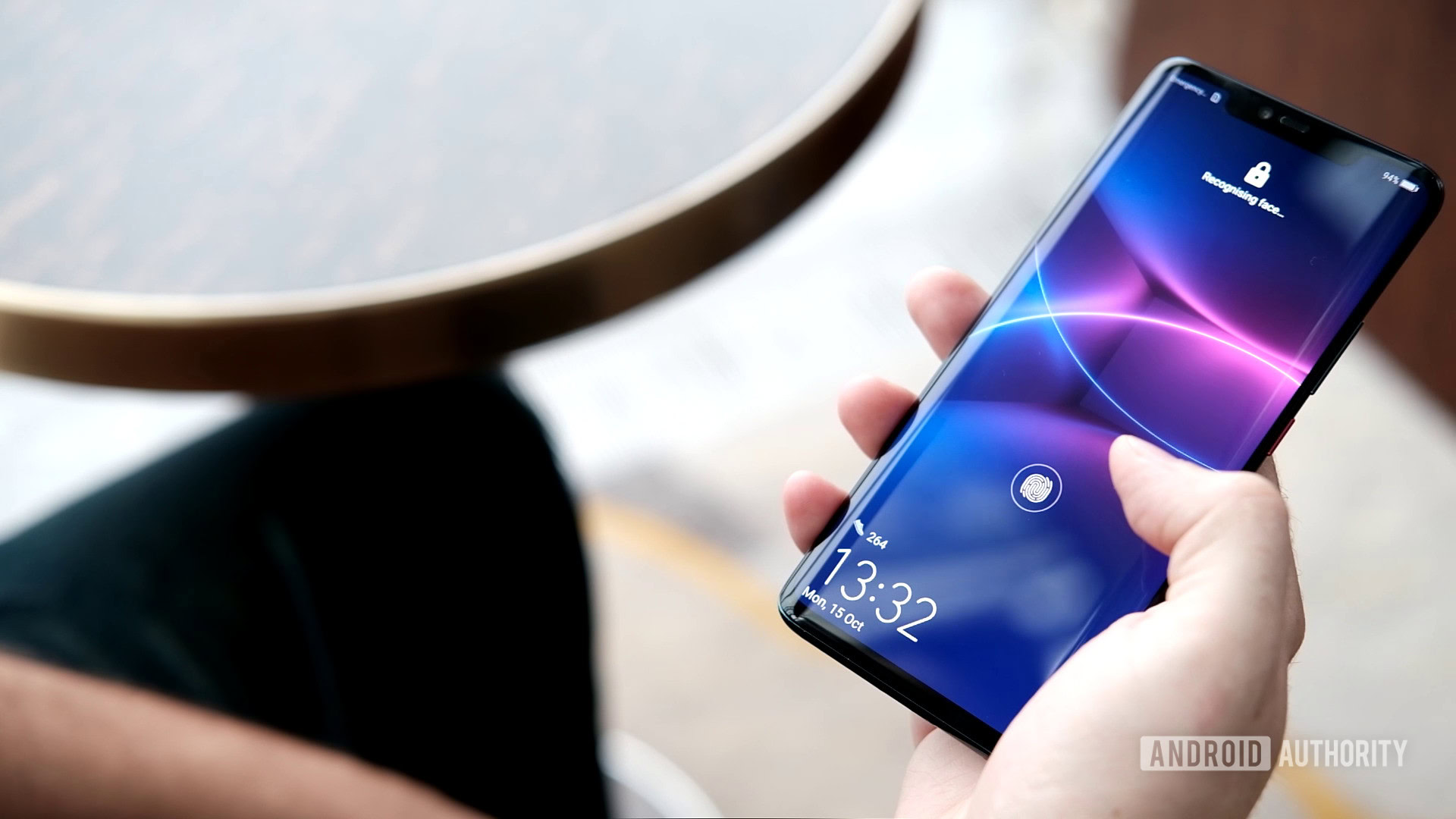Affiliate links on Android Authority may earn us a commission. Learn more.
HUAWEI Mate 20 and Mate 20 Pro vs the competition

We’re right in the middle of a wave of major smartphone releases and the HUAWEI Mate 20 and Mate 20 Pro are next on the bill. They join the new Google Pixel 3 and 3 XL, LG V40 ThinQ, and Samsung Galaxy Note 9 as big handsets with big price tags vying for your attention.
So which is the best that money can buy, and which, if any, of these phones is in contention for the best smartphone of the year?
Don’t miss: HUAWEI Mate 20 and Mate 20 Pro hands-on: Cameras, cubed
The first 7nm Android phones
HUAWEI is laying down the performance gauntlet with the Mate 20 series as the first company to offer Android users the performance and energy benefits of a 7nm chipset. Inside the Kirin 980, we find a big-medium-little CPU combination, with four powerhouse Cortex-A76 and four efficient Cortex-A55 cores that should give the chip a single thread and sustained performance benefit over both the Snapdragon 845 and Exynos 9810. There’s also double the NPU compute capabilities this time around, giving HUAWEI a notable lead in the “AI” and image recognition departments.
The Kirin 980 gives HUAWEI’s chip a much-needed graphics performance boost too, featuring a new 10 core Mali-G76 arrangement. HUAWEI claims that the chip edges out the Snapdragon 845’s Adreno 630 when utilizing the company’s GPU Turbo technology. The Kirin 980 is clearly competitive in this regard and should handily beat Samsung’s Exynos here, but it isn’t breaking major ground in the graphics department.
| HUAWEI Mate 20 | HUAWEI Mate 20 Pro | Google Pixel 3 XL | Samsung Galaxy Note 9 | LG V40 ThinQ | |
|---|---|---|---|---|---|
Display | HUAWEI Mate 20 6.53-inch RGBW panel 2,244 x 1,080 resolution 18.7:8 aspect ratio | HUAWEI Mate 20 Pro 6.39-inch curved OLED 3,120 x 1440 resolution 19.5:9 aspect ratio | Google Pixel 3 XL 6.3-inch P-OLED 2,960 x 1,440 resolution 18.5:9 aspect ratio | Samsung Galaxy Note 9 6.4-inch AMOLED panel 2,960 x 1,440 resolution 18.5:9 aspect ratio | LG V40 ThinQ 6.4-inch P-OLED FullVision 3,120 x 1,440 resolution (Quad HD+) 19.5:9 aspect ratio |
CPU | HUAWEI Mate 20 7nm octa-core Kirin 980 (2x A76 + 2x A76 + 2x A55) | HUAWEI Mate 20 Pro 7nm octa-core Kirin 980 (2x A76 + 2x A76 + 2x A55) | Google Pixel 3 XL 10nm, octa-core Qualcomm Snapdragon 845 | Samsung Galaxy Note 9 Global: 10nm, octa-core Samsung Exynos 9810 (2.8 GHz quad + 1.7 GHz quad) U.S.: 10nm, octa-core Qualcomm Snapdragon 845 | LG V40 ThinQ 10nm, octa-core Qualcomm Snapdragon 845 |
GPU | HUAWEI Mate 20 Mali-G76 MP10 @ 720MHz | HUAWEI Mate 20 Pro Mali-G76 MP10 @ 720MHz | Google Pixel 3 XL Adreno 630 | Samsung Galaxy Note 9 Mali-G72 MP20 / Adreno 630 | LG V40 ThinQ Adreno 630 |
RAM | HUAWEI Mate 20 4/6GB | HUAWEI Mate 20 Pro 6GB | Google Pixel 3 XL 4GB | Samsung Galaxy Note 9 6/8GB | LG V40 ThinQ 6GB |
Memory | HUAWEI Mate 20 128GB | HUAWEI Mate 20 Pro 128GB | Google Pixel 3 XL 64/128GB | Samsung Galaxy Note 9 128/512GB | LG V40 ThinQ 64/128GB |
MicroSD | HUAWEI Mate 20 Yes, up to 256GB (nano memory card) | HUAWEI Mate 20 Pro Yes, up to 256GB (nano memory card) | Google Pixel 3 XL No | Samsung Galaxy Note 9 Yes, up to 512GB | LG V40 ThinQ Yes, up to 2TB |
Battery | HUAWEI Mate 20 4,000mAh Non-removable | HUAWEI Mate 20 Pro 4,200mAh Non-removable | Google Pixel 3 XL 3,430mAh Non-removable | Samsung Galaxy Note 9 4,000mAh Non-removable | LG V40 ThinQ 3,300mAh Non-removable |
Dimensions and weight | HUAWEI Mate 20 158.2 x 77.2 x 8.3mm 188g | HUAWEI Mate 20 Pro 157.8 x 72.3 x 8.6mm 189g | Google Pixel 3 XL 76.7 x 158.0 x 7.9mm 184g | Samsung Galaxy Note 9 161.9 x 76.4 x 8.8mm 201g | LG V40 ThinQ 158.7 x 75.6 x 7.6mm 168.9g |
The Mate 20 and Mate 20 Pro differ slightly when it comes to RAM. 6GB is the only option with the Pro model, but you can get a smaller 4GB RAM configuration inside one of the regular Mate 20 variants. It’s not a deal breaker compared to the new Google Pixel 3, but those craving super fast multi-tasking will want the 6GB model. Both Mate 20 models come with 128GB of storage, which is what we’ve come to expect from flagship smartphones. There’s a nano memory card slot for extra space too, although the Samsung Galaxy Note 9’s 512MB storage option might be a big draw for heavy media users.

Onto the display and this is where we can clearly begin to see a wider gap between the two Mate 20 models and some other flagship phones. The standard Mate 20 opts for an RGBW LCD panel, similar to that inside the LG G7, which offers an eye-watering 820 nites of peak brightness. There’s a familiar FHD+ resolution here and a panel size that feels truly huge even stacked up next to the Galaxy Note 9 and LG V40. The display appears crisp enough, but the pixel density is definitely lower than other flagship phablets.
The HUAWEI Mate 20 Pro’s curved OLED display makes the phone feel much thinner and easier to hold. There’s also a jump up to a QHD+ 3,120 x 1,400 resolution and super-wide 19.5:9 aspect ratio — a match for the LG V40. Resolution wise, the Pro model is more typical of what we’ve come to expect from flagship smartphones. Although dropping the rendering resolution down to save on battery life is now so common that it’s not necessarily a major differentiator.
The battery ties these bleeding edge specs together and HUAWEI has crammed large 4,000 (Mate 20) and 4,200mAh (Mate 20 Pro) units into these handsets. That’s comparable to the Note 9’s 4,000mAh cell and makes the Pixel 3 XL’s and LG V40’s cells look puny by comparison. All day battery life shouldn’t be a problem for even the heaviest users. HUAWEI even expects that you’ll have enough juice spare to charge up other people’s phones via its reverse wireless charging technology.

The triple camera returns
The HUAWEI P20 Pro introduced the triple camera to the smartphone world and idea returns with the Mate 20 and Mate 20 Pro, albeit with a few variations. The only other triple camera phone to launch so far is the LG V40, while Google remains adamant that a single camera is the way to go with its new Pixel 3.

Huawei’s combination consists of the main sensor, telephoto lens, and a wide angle lens, having dropped the monochrome sensor from previous designs. This is a very similar setup to the LG V40, offering consumers a wide range of shooting options to capture the perfect picture.
The Mate 20 Pro retains the impressive 40MP shooter from the P20 Pro, alongside a 3x telephoto lens that extends zoom capabilities further than its competitors. The regular Mate 20 loses the 40MP sensor and instead uses two 16MP and 12MP wide angle lenses. The 8MP telephoto lens is also dropped back to just a 2x zoom. You’ll also find a 2x telephoto lens inside the Galaxy Note 9 and LG V40, making it pretty par for the course these days.
We’ll render a verdict on quality after some more hands-on time with the phones. Even so, it’s clear that the Mate 20 series and the LG V40 are the most flexible shooters on the market right now.

Enough extras to justify the price tag
My biggest complaint about previous HUAWEI flagships, like the P20 Pro, has been that they lack the extras we’ve come to expect at these high price points. The Mate 20 Pro addresses this complaint and then some, although the standard Mate 20 still feels a little lackluster here.
The Mate 20 Pro boasts an IP67 rating, Qi wireless charging with a reverse charging option, 3D infrared facial recognition security, and a lightning-fast fast in-display fingerprint scanner. That’s more than a match for what you’ll find in the Pixel 3, LG V40, and even the Galaxy Note 9.
| HUAWEI Mate 20 | HUAWEI Mate 20 Pro | Google Pixel 3 XL | Samsung Galaxy Note 9 | LG V40 ThinQ | |
|---|---|---|---|---|---|
Camera | HUAWEI Mate 20 Rear: 16MP (Ultra Wide Angle 17mm, f/2.2) 12MP (Wide angle 27mm, f/1.8) 8MP (2x Telephoto 52mm, f/2.4, OIS) Front: 24MP (f/2.0, FF) | HUAWEI Mate 20 Pro Rear: 40MP (Wide Angle 27mm, f/1.8) 20MP (Ultra Wide Angle 16mm, f/2.2) 8MP (3x Telephoto 80mm, f/2.4, OIS) Front: 24MP (f/2.0, FF) | Google Pixel 3 XL Rear:12.2MP f/1.8 sensor Front:(2) 8.2MP f/2.2 sensors, (1) wide angle sensor and depth sensor | Samsung Galaxy Note 9 Rear: 12MP Wide Angle dual aperture sensor with f/1.5 and f/2.4 apertures, & OIS + 12MP 2x Telephoto with f/2.4 aperture & OIS Front: 8MP sensor with f/1.7 aperture | LG V40 ThinQ Rear: Main camera: 12MP sensor, ƒ/1.5 aperture, 78° field-of-view, 1.4µm pixel size, OIS, Dual PD Autofocus Super wide: 16MP sensor, ƒ/1.9 aperture, Crystal Clear Lens, 107° field-of-view 2x telephoto zoom: 12MP sensor with 45° field of view Front: Standard: 8MP sensor, ƒ/1.9 aperture, 1.12µm pixel size, 80° field-of-view Wide: 5MP sensor, ƒ/2.2 aperture, 1µm pixel size, 90° field-of-view |
IP Rating | HUAWEI Mate 20 IP57 | HUAWEI Mate 20 Pro IP67 | Google Pixel 3 XL IP67 | Samsung Galaxy Note 9 IP68 | LG V40 ThinQ IP68 MIL-STD 810G |
Audio | HUAWEI Mate 20 3.5mm headphone jack aptX HD & LDAC Bluetooth | HUAWEI Mate 20 Pro No 3.5mm headphone jack aptX HD & LDAC Bluetooth | Google Pixel 3 XL Dual front facing speakers No 3.5mm headphone jack aptX & LDAC Bluetooth | Samsung Galaxy Note 9 Bottom-firing speaker 3.5mm audio jack aptX & LDAC Bluetooth | LG V40 ThinQ Boombox Speaker DTS:X 3D Surround Sound Hi-Fi Quad DAC 3.5mm headphone jack aptX HD & LDAC Bluetooth |
Charging | HUAWEI Mate 20 22.5W HUAWEI SuperCharge USB Type-C | HUAWEI Mate 20 Pro 40W HUAWEI SuperCharge 15W Wireless Charging USB Type-C | Google Pixel 3 XL Wireless Charging USB Power Delivery USB Type-C | Samsung Galaxy Note 9 Adaptive Charging (Quick Charge 2.0, 18W) USB Type-C | LG V40 ThinQ Wireless charging Qualcomm Quick Charge 4 (ships with QC 3.0 charger) USB Type-C |
Connectivity | HUAWEI Mate 20 Wi-Fi 802.11ac Bluetooth 5.0 NFC | HUAWEI Mate 20 Pro Wi-Fi 802.11ac Bluetooth 5.0 NFC | Google Pixel 3 XL Wi-Fi 802.11ac Bluetooth 5.0 NFC | Samsung Galaxy Note 9 Wi-Fi 802.11ac Bluetooth 5.0 NFC | LG V40 ThinQ Wi-Fi 802.11ac Bluetooth v5.0 NFC |
Software | HUAWEI Mate 20 Android 9.0 EMUI 9 | HUAWEI Mate 20 Pro Android 9.0 EMUI 9 | Google Pixel 3 XL Android 9.0 Pie | Samsung Galaxy Note 9 Android 8.1 Oreo Samsung Experience | LG V40 ThinQ Android 8.1 Oreo LG UX 6.0+ |
The regular Mate 20 has to make do with an IP57 rating for basic splash-proofing. It also misses out on the in-display fingerprint scanner, and wireless charging capabilities. That’s a bit of a let-down compared with what the competition is offering at a similar price point.
On the plus side, the HUAWEI Mate 20 series ships with Android 9.0 Pie out of the box. Something that can’t be said for the latest smartphones from Samsung and LG. EMUI 9 has also been improved for faster performance, reduced settings bloat, and some handy new health features.
The HUAWEI Mate 20 range looks pretty solid, but the Pro variant, with all of its bells and whistles, is by far and away the more appealing flagship model. Compared to its competitors, the Mate 20 Pro has a lot of unique selling points — including its 7nm processor, in-display fingerprint scanner, and that cool reverse wireless charging idea. Not forgetting that the camera package is bound to be one of the best around and Android Pie features without having to wait for an update.
Catch up on everything HUAWEI just announced: